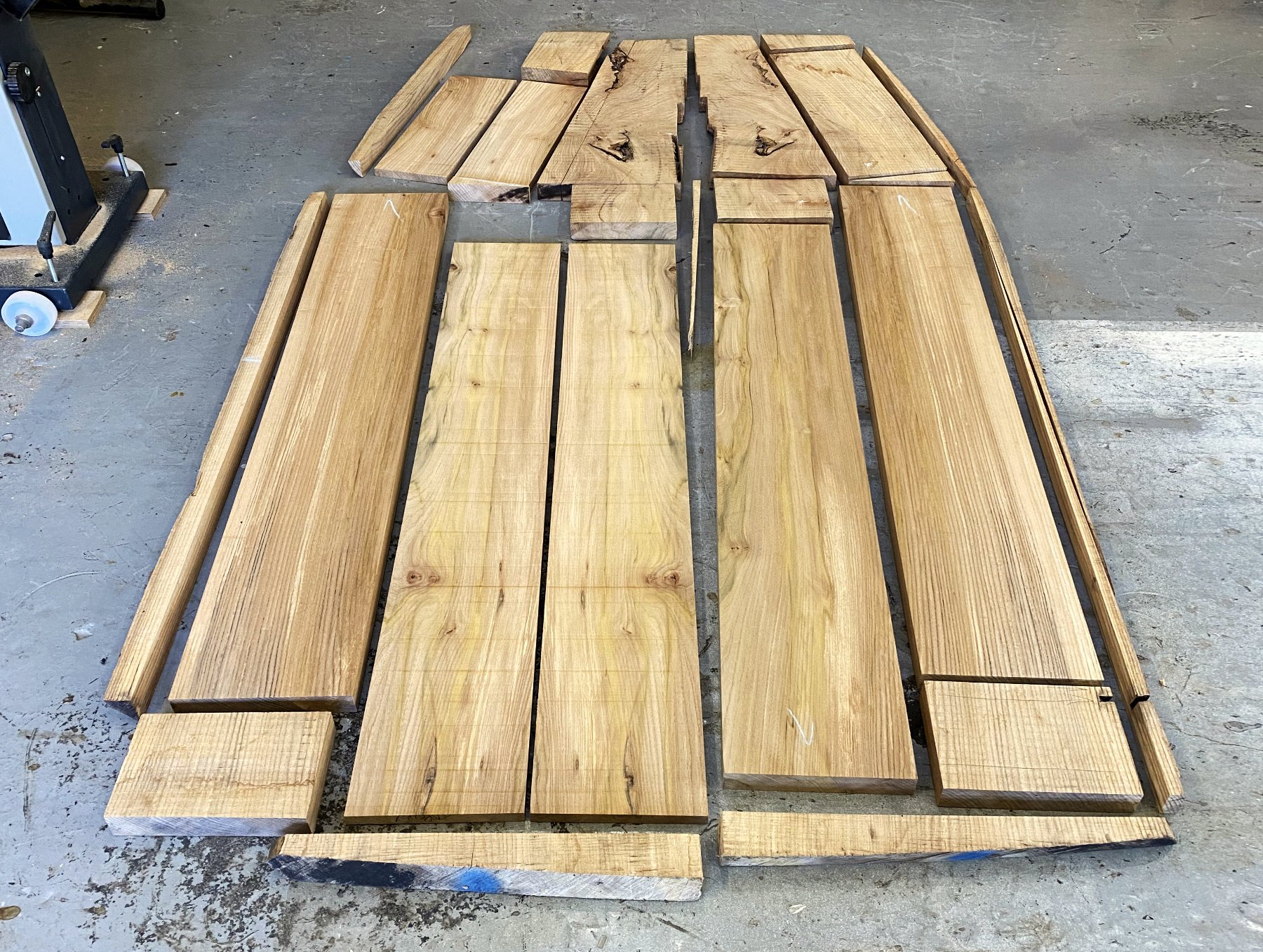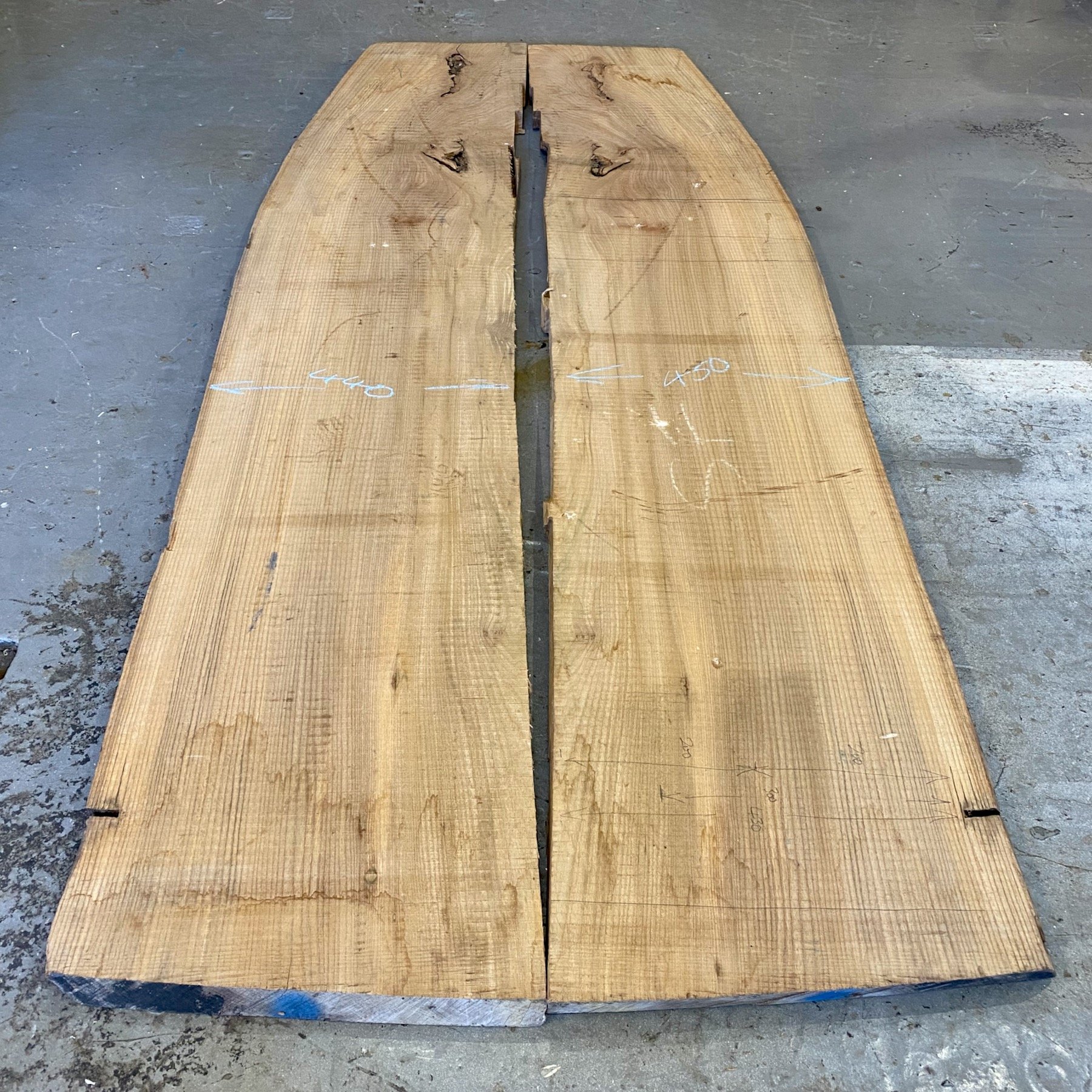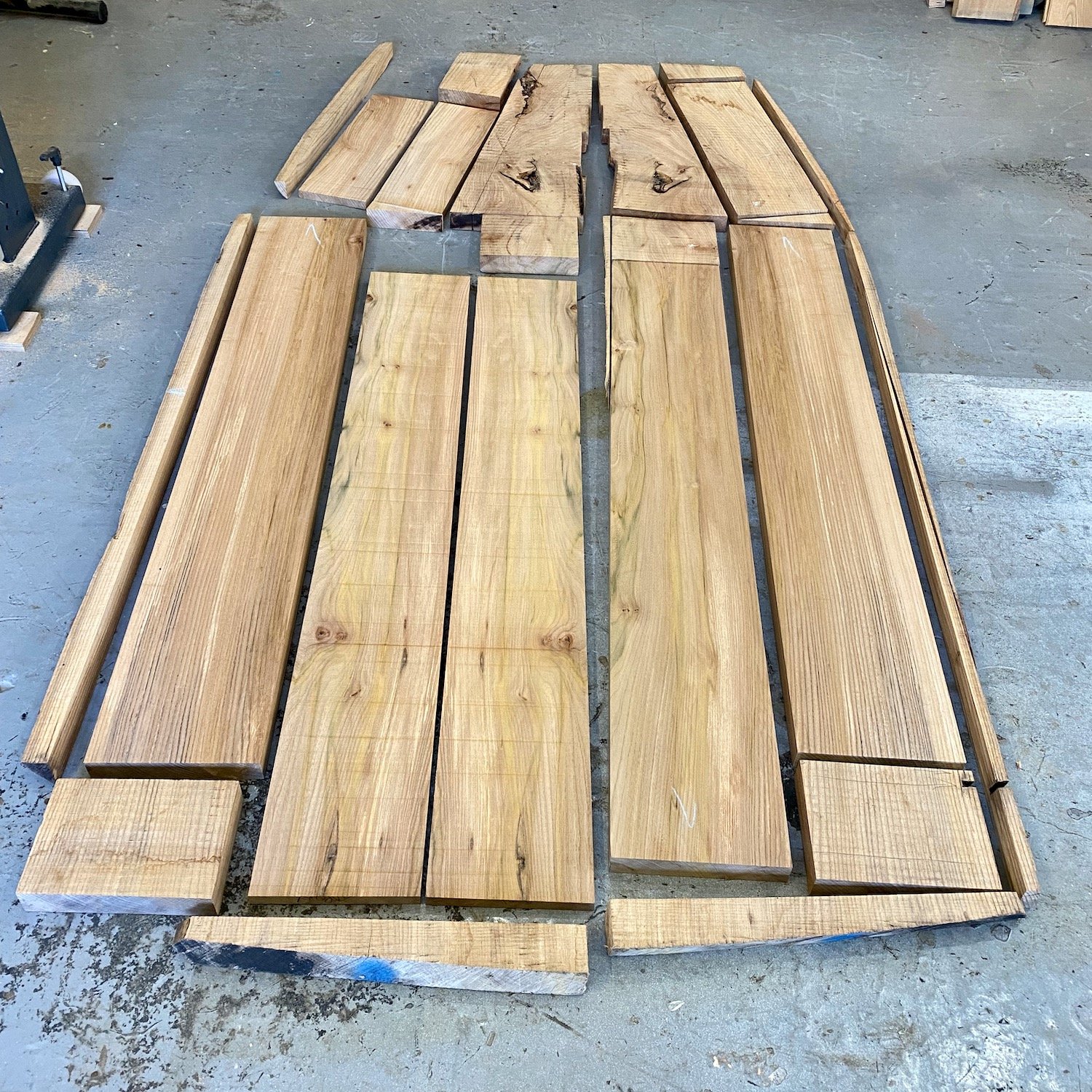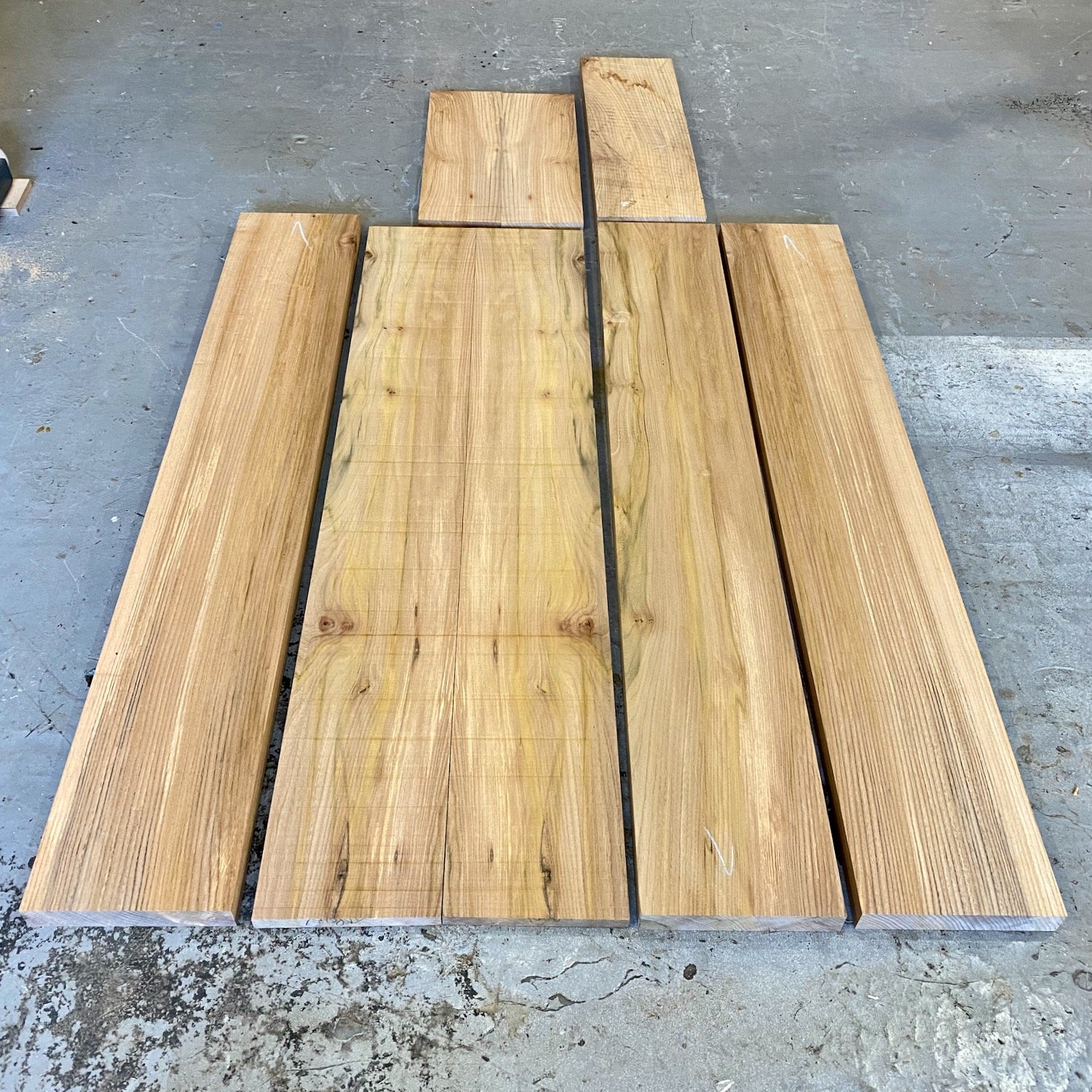Thoughts on Timber Selection
May 1, 2022
Throughout my career I’ve used native scottish hardwoods almost exclusively. There is a sense of place and environment about locally sourced timber that appeals to me and suits my work. I can use the variety of grain, tone and structure to enhance my work and enjoy the challenge of drawing the best from the timber. Not all my clients are interested in the origins of the wood I use but they do place their trust in my abilities to source the best for the project at hand.
I gained a thorough grounding in timber processing, buying, drying and selling in the decade working with Keith Threadgall and my colleagues at Real Wood Studios. Now in my own workshop I continue to buy from ASHS members and other local suppliers. With fellow maker Tom Cooper, we occasionally process the odd log of elm when the opportunity arises.
Learning to read rough sawn boards and break them down into useable pieces is an important skill. Choosing to work around major defects or including them to maximise the yield from each board. I’m used to raking through racks of timber to find boards for my work and can usually quickly read and grade a board for suitability. As a small volume, high value maker with a materials based bias I’m generally more interested in consecutive boards coming from the same log than a particular grade or cut. I find that locally sourced timber usually has a variety of grades within a single board - a bit of quarter sawn, a knot or two, a split and so on. These can all be accommodated, within reason, as long as wood has been properly dried to a consistent moisture content and is stable, free from rot and sticker stain.
“I’m very selective when buying timber and know what is and isn’t acceptable for my style of working.”
However, sometimes a project calls for a more uniform and standardised timber that can be hard to locate quickly in reliable quantity and quality from locally grown resources. Aside from the ubiquitous American Black Walnut, there is a demand amongst furniture-makers for high quality timber of consistent standards: quarter sawn oak, clean white ash and so on. During Lockdown I resorted to buying European Prime quarter-sawn oak for a couple of projects. It was something of an eye opener to be able to order 3m+ lengths of defect free, straight grained, quarter sawn German oak and have delivered exactly what I wanted at a very competitive price. With minimal waste, high quality and stability the oak was a pleasure to work with and suited the project perfectly - floor to ceiling kitchen cupboard doors. I did feel the European Oak lacked the character and variation I like to incorporate and explore in my work. However it has become a useful option for future projects that are more production based rather than creative endeavours.
I recently found my old copy of Making the Grade - published in 2005, the year before I started my career in woodwork. As a novice, I naively assumed that all locally sourced timber would be sold according to this guide. I quickly learnt that this wasn’t the case. Upon re-reading the guide I realised how formative it was in my career and how I mentally use it every time I visually grade the timber I buy. As a furniture-maker, I’d like to be able to confidently buy the equivalent of European Prime Quarter-Sawn Oak from locally sourced suppliers - and have it delivered. On the other hand, I enjoy the hunt of discovering character boards in forgotten corners of barns and storage containers. As a former ASHS member and part of a small scale timber processing setup, I understand the challenges of the available natural resource in Scotland and the timber production methods available in creating a standardised graded product. Nearly 20 years since Making the Grade was published I found myself wondering if its objectives are any closer to being realised? Whether they could or should be is another question…?
This article first appeared in Edition 15 of The Full Circle Journal, Spring 2022.





